| First signed in 1959 by twelve nations, the Antarctic
treaty has been approved by 25 other ones. These countries maintain
bases on the Antarctic continent (list on www.comnap.aq),
supplied by ships. For this purpose, navies or commercial companies use to
charter specialised ships, used also for scientific missions.
| The summer station Juan-Carlos-I was inaugurated
on 11 January 1988. The modules to built it were carried by the
Polish ship Antoni Garnuszewski. From 1989, it is supplied by the
high-seas tug AR52 LAS PALMAS, replaced in 1992 by HESPERIDES. |
|
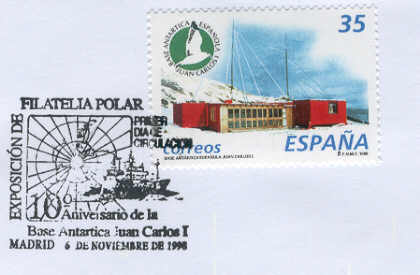
|
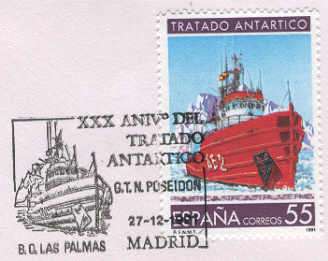 |
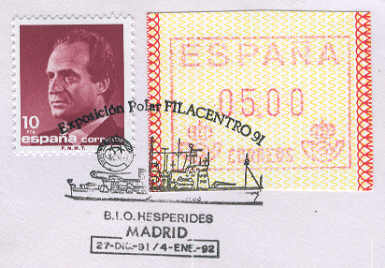 |
| 41,20 m long, the tug LAS PALMAS, launched in
1968, is the first ship used in the campaigns between 1988 and 1991
before being replaced by HESPERIDES. |
82,50 m long, HESPERIDES has a range of 12 000 milles
at 12 knots, thanks to two electric engines of 1400 kW powered by 4 generators
diesel (2 of 1300 kW, 2 of 750 kW). |
| Chile is one of the first twelve signatories
of the treaty, on 1st December 1959 at Washington. It maintains now
in Antarctic peninsula eight bases where four are permanent, managed
by INACH, Instituto Antarctico
Chileno. |
|
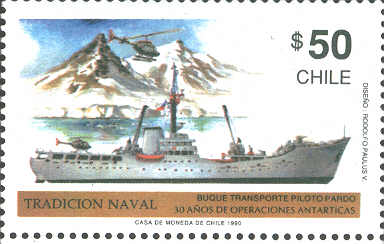 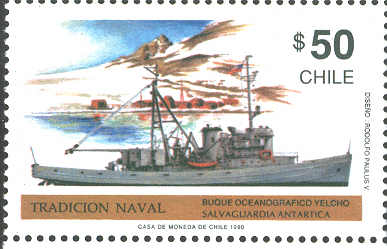
|
|
The hydrographic ship PILOTO PARDO
makes her first trip during the austral summer1959-60.
83 m long, her 3 diesel engines allow a speed of 14 knots. She is est
decommissioned in 1997. |
The tug USS TEKESTA, built in 1943, is bought by the Chilean navy in 1960
to serve as a research oceanographic ship under the name of YELCHO
until 1996. |
|
| The Peru is consultative member of Antarctic
treaty since 1989. Multiples activities are realised at Machu
Picchu Station, on King George Island.
|
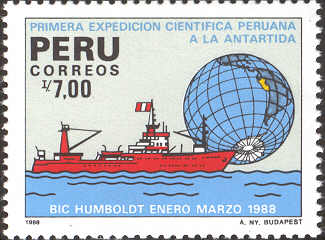 |
Built in 1978 as a stern trawler, HUMBOLDT
is 76.20 metres
long and 1731 Gross tons. On 26 February 1989, she hit rocks
off and the 64 people on board are saved by the Ice Patrol
Ship HMS ENDURANCE. (see next page) |
| Equator owns only one base in Antarctic peninsula.
From 1981 ORION, a 70.21 meters and 1418 tons
ship is used. With a range of 6000 milles at 12 knots, she can
embark 28 scientifics on board. |
 |

Cover carried on board ORION |
| The Brazil owns a permanent base on
King George Island. It is supplied by BARAO de TEFFE
which carried the first Brazilian expedition in 1982-83. |
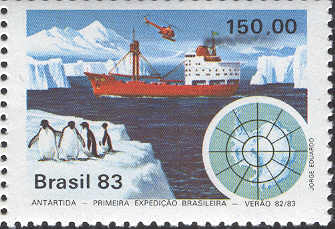 |
BARAO de TEFFE is not else that THALA DAN,
used by the French Antarctic Territories during 18 consecutive
campaigns (see the French Antarctic Territories ships).
Built in Denmark in 1957, she is first used to supply the
Australian bases at Casey and Mawson. Modernised in 1975, she
is sold in 1982 to Brazil. |
|
|
| With its geographic place, Argentina
is an active country in Antarctic, despite its financial problems.
The country owns several permanent bases either on the continent
or in Antarctic peninsula. |
|
BAHIA AGUIRRE, built at Halifax in 1950, 102.5 m long,
powered by two diesel engines of 3750 hp at
15 knots,can carried 100 passengers with100 crew.
|
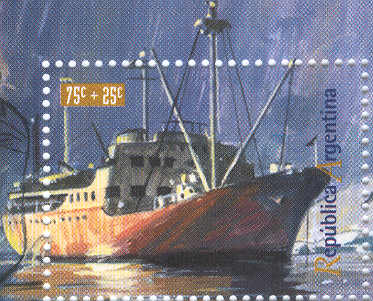
|
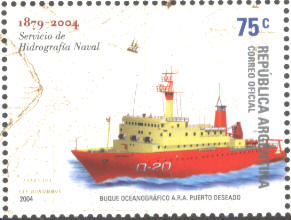 |
The oceanographic vessel PUERTO DESEADO was built in
Argentina for Consejo Nacional de Investigaciones Technicas y
Cientificas (Conicet
) in 1976. Her dimensions:
76.81 x 13.2 x 4.5 m
AIce-strengthened, she sails easily in Austral waters thanks
to her 2 diesels at 15 knots. |
The
research/supply icebreaker A.R.A. ALMIRANTE
IRÍZAR, was delivered in 1978 by Wärtsilä´s Shipyard,
Finland. The A.R.A. Almirante
Irizar is designed for supplying the research
stations on the Antarctic continent with some 200 persons on
board.
http://www.irizar.org/indexe.html
|

In June 2002, the icebraker comes to help
the Magdalena Oldendorf, trapped
by ice,carrying
79 Russian scientists and 28 crew members to Cape Town from
the Novolazarevskaya station |
| Germany manages three bases where
one is permanent. Alfred Wegener Institute for Polar and Marine Research
uses "the most sophisticated polar research vessel in the
world", POLARSTERN. |
|
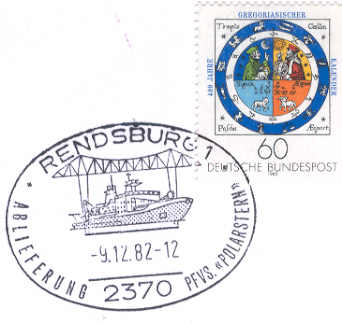
|
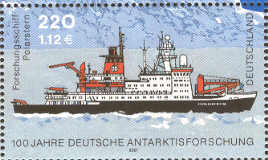
|
| POLARSTERN, built at
Kiel, is 118 m long and is powered by 4 engines of approx. 14000 kW.
She is a double-hulled icebreaker able to break through ice
1.5 metres thick at a speed of approx. 5 knots. 50 scientifics
may work on board in 9 laboratories. |
| The Belgium with Adrien de Gerlache
in 1897 is a pioneer in the exploration of Antarctic lands but
didn't own any more installation. Nvertheless King Baudouin base
will be used from 1957 to 1967. In 2007, the Belgium should
come back in Antarctic, in partnership with the Japan. |
| ERIKA DAN is launched in 1958 with a
gross tonage of 2648 tons and a speed of 14 knots: the
National Polar Research Centre of Belgium charters her in
1959-60 and in 1960-61 tocarry loads to King Baudouin base. |
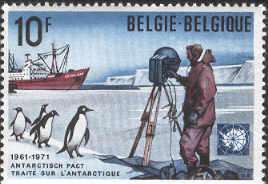
|
| The Japan maintains a single
permanent base, Showa, founded in 1957. Three other summer stations
exist: Misuho (1970) Asuka (1984) and Dome
Fuji. |
SHIRASE, launched in 1981,
is a 134 m long ice-breacker, carrying two Sikorski S-61A helicopters
and one OH-6 helicopter for transportation and research.
The ship is named after Lieutenant Nobu Shirase who led the
first Japanese party to the Antarctic in between 1910 and
1912. |
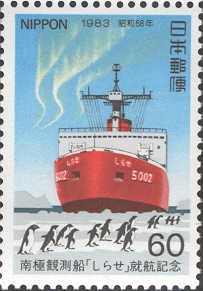
|
|

|
|
To follow other ships: Ships
in
Antarctic (2) |

















 MENU
MENU 
